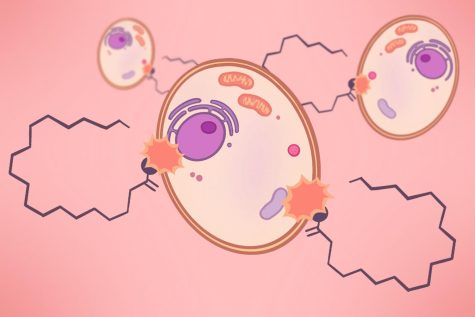Study finds epigenetic modifications last multiple generations in toxin-adapted fish
About 80 percent of epigenetic marks persisted between generations; future experiments involve crossing populations
This image, which appears in the study manuscript, shows the physical differences between freshwater and toxin-adapted Atlantic molly. Toxin-adapted fish have larger heads and gills as adaptations to the oxygen-deficient water.
July 2, 2021
WSU researchers found in a study that epigenetic modifications for fish living in toxic hydrogen sulfide-rich water can last for two generations after being moved to fresh water.
DNA itself — through combinations of four different molecules called base pairs — controls where genes exist. Epigenetic modifications turn genes on and off without changing the DNA base pair sequence, said Joanna Kelley, study co-principal investigator and WSU School of Biological Sciences associate professor.
“Epigenetics are the marks on DNA that are not changes to the DNA [sequence] itself,” Kelley said.
There are several types of epigenetic modifications, including DNA methylation, histone marks and non-coding RNA, said Michael Skinner, study co-principal investigator and School of Biological Sciences professor.
The researchers primarily focused on DNA methylation, which occurs when an enzyme adds a small molecule called a methyl group to the molecules of the DNA strand. Adding this mark causes genes to turn off, or not be expressed, Skinner said.
Epigenetic modifications determine how different cell types develop in an organism, he said. For example, skin cells and eye cells contain the same DNA sequence, but have distinct characteristics because certain genes are turned on or off based on methylation patterns.
A species of fish called Atlantic molly has two subpopulations. One subpopulation lives in fresh water and the other lives in naturally occurring hydrogen sulfide-rich springs, Kelley said. Hydrogen sulfide is toxic to most organisms.
“These different populations of Atlantic mollies have adapted to hydrogen sulfide,” she said. “Essentially, nature has done the experiment for us.”
The populations of fish have essentially the same DNA sequence, Skinner said. The epigenetic modifications were the main differences.
“This is a distinct form of inheritance,” he said. “Epigenetics has evolutionarily been put in place to respond to the environment, to give it this plasticity, so the organism has the ability to survive more efficiently in different environments, and that gets passed to subsequent generations.”
Researchers moved pregnant females from hydrogen sulfide-rich water to fresh water, then waited two generations and sampled blood from the grand-offspring, Kelley said.
About 80 percent of the DNA methylation marks persisted between generations, according to the study.
This finding means epigenetic modifications are fairly stable between generations, Skinner said.
“Epigenetic changes may be how a population could persist in an environment, especially in a short amount of time,” Kelley said. “So these epigenetic changes may be the first layer of changes we see in a population as they’re inhabiting a new environment.”
Hydrogen sulfide-adapted populations have larger heads and gills than freshwater populations to help them access oxygen in the oxygen-deficient water, Kelley said.
In future experiments, Kelley said she hopes to cross both the freshwater and hydrogen sulfide-adapted fish to see how methylation marks persist.


















